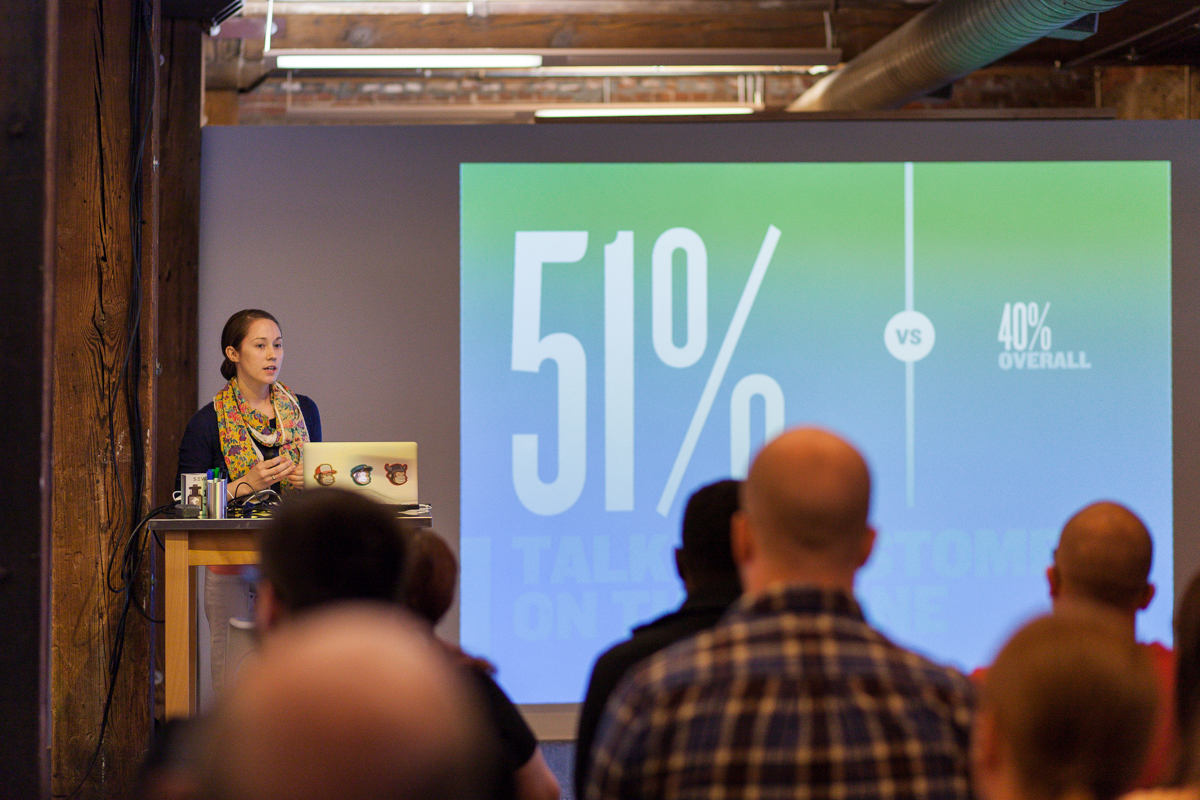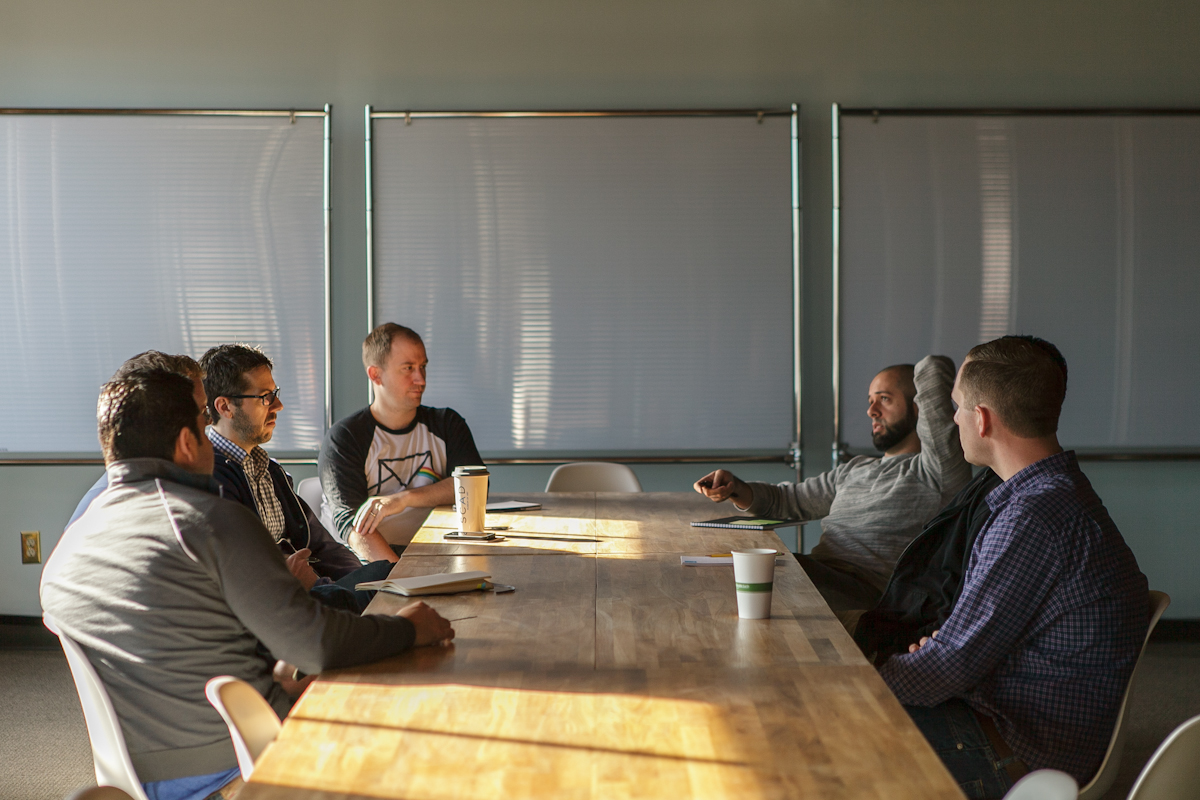Before working in UX, I taught composition and technical writing at a university in Atlanta. Every semester, I tweaked and tailored my teaching methods and materials to each unique group of students: I brought in YouTube videos to illustrate concepts, I scoured the web for readings that related directly to my students’ majors or interests, I drew charts and edited examples on the board, and I met with students individually when group discussions and class time just weren’t enough. Ultimately, I understood that if I couldn’t effectively communicate the course information to my audience of students in a way they would understand, I was wasting both their time and mine.
In some ways, teaching is very much like UX research. We are first responsible for learning our “subject matter”: we gather information about products, analyze it, and make meaning from it. Then we share our understanding with an audience, to “teach” them. Of course, our audience isn’t students, but designers, developers, writers, marketers, and stakeholders who (ideally) use it to make better products or services. Unfortunately, though, we can become so focused on gathering research that we don’t focus enough attention on effectively sharing our research. What we may not realize is that as researchers, we can only influence our users’ experiences with our products if we effectively communicate in a way that influences action and change.
For many of us, the immediate challenge is figuring out how to maneuver through the process of research collection and analysis. What are the best research methods? How do I identify the right participants? How can I gather information more quickly? How do I organize and wade through all this information? But this focus on gathering and making sense of our findings is only half of a user researcher’s job. Just as with teaching, our hard work and knowledge of our subject matter is worthless if we can’t effectively communicate what we’ve learned.
It starts with audience
As a teacher, I focused my lessons around how my students learned best. In user experience, we focus our product design and content around what the user needs. But as user researchers, our audience is not the end user—it’s our colleagues.
Creating research deliverables without keeping our colleagues specifically in mind is kind of like trying to design for users without knowing anything about them. Each person and department in our organizations is different; they have different goals, different needs, and different communication styles. When we learn, for example, that numbers and percentages appeal to certain people and rich narratives appeal to others, or that reports work fine for some people and small group conversations work better for others, we can communicate our research findings more persuasively.
As a teacher, I didn’t conduct any formal research about my students. I didn’t take a poll asking about their preferred teaching method or give them a quiz to determine their learning style. I simply observed them and made the most of the hours I spent with them each week. As I became familiar with the makeup and dynamics of each class, I identified trends about their learning preferences and needs: some students were visual and needed to see multiple in-class examples, others had to verbally talk through tricky concepts, and a few seemed to learn perfectly fine just reading and applying material from the course texts. All students benefited from repetition and working with the same material in several different ways. I tested out new teaching techniques, discarding the ones that didn’t seem effective for that particular group and repeating those that were.

In a similar way, getting to know the people we work with also helps us identify the communication styles that appeal to them and the learning styles that are most effective for them. At MailChimp, a mid-sized software development company, one of the challenges our research team faces is figuring out how to share information among over 250 people, across several different departments. We’ve done a lot of experimenting over the past few years to figure out ways to keep research interesting and engaging. As we experiment, we pay attention to how our colleagues receive information and respond, so we can tweak and adjust how we communicate research in the future. We try to mix narratives with statistics, images with text, and videos with reports or company-wide presentations—all in an effort to make the research engaging and accessible.
Communicating UX research
Through the relationships we’ve established and continue to cultivate across every team at MailChimp, the UX research team makes a conscious effort to understand how our colleagues learn and process information. With that in mind, we experiment with different methods for sharing our research findings with the rest of the company. Every organization is different, so our methods may not be a perfect fit everywhere, but getting a sense of what works for our team at MailChimp may spark new ideas for other UX teams.
Reports
Reports are often what first come to mind when we think about communicating research results—but that doesn’t make them the best choice. Crammed full of valuable information, reports are often fated to a quick death, left unread on the corner of someone’s desk or filed away and forgotten in a metal cabinet. At MailChimp, we mitigate this risk by keeping reports short (usually under 20 pages). We also share them through Google Drive, which allows us to keep a running dialogue between folks in other departments through commenting. While our reports do take on a formal structure with the standard sections like Introduction, Executive Summary, Methodology, etc., we keep them as conversational and non-academic as possible. This both fits our company’s somewhat unique brand and image and also makes our reports less painful for our colleagues to read!
A few folks around the MailChimp office truly love digging into reports, but we know that many others cringe at the thought of reading a long-form document. While reports continue to live on as a familiar method for presenting research, we’d much prefer to experiment with other formats that are more visual and engaging.
Posters
Posters are a visually interesting way to present high-level information that can be taken in and digested at a glance. Last year, for example, MailChimp created posters of our customer personas and hung them near a spot in our offices that saw the most foot traffic—our espresso machine.
Our intention for these persona posters wasn’t to communicate everything we knew about personas—we had a report and a company-wide Coffee Hour presentation for that. Instead, we wanted something that would spark people’s interest and make them curious. The posters did just that! They prompted conversation, questions, and (most importantly) ideas. People began thinking of our customers in different ways: our marketing team brainstormed how they could reach out to different types of customers, our quality assurance team started structuring their testing differently, and support categorized customer issues in new ways. We count that as a major accomplishment!
(Bonus: Posters can be easily moved to different spots throughout an office to keep things fresh.)
Mini-documentary Research Videos
We love talking to our customers over Skype or GoToMeeting, and we love getting customer feedback from survey responses and emails, but nothing helps us understand our customers better than visiting them where they work and watching how they conduct business. We learn so much from these visits, and we want to share this “insider’s look” with the rest of our company. With permission, we take videos and pictures of our customers’ workspaces, and we record our interviews. After we get home, we go through all of that media for salient bits of information and then edit it down into short, mini-documentary style videos that we share with the rest of the company.
Videos help us turn our research into a narrative, a living story. With videos, customers aren’t just descriptions on a page; they’re living, breathing human beings with unique circumstances and environments. Sure, we could tell our company that some customers work in very noisy, distracting environments. But it’s much more effective to show them by letting them see a brief clip of people scurrying around an office or allowing them to strain for a few seconds to understand an interview that’s drowned out by a loud conversation that was taking place next door.
Because each mini-documentary is focused on just one customer, they are effective supplements to other communication forms, like reports or presentations. Videos help provide context to statistics by attaching faces or specific use cases to broad patterns and trends.
Usability Lunches
We work with an incredible group of user-focused designers and developers at MailChimp, but nothing sharpens that focus and motivates action like watching someone struggle with our app during a live usability test. We don’t have a fancy usability lab with two-way mirrors, but we’ve found that we don’t really need that. We usually just order in lunch, gather a group of about twenty folks together, project our participant’s computer screen up on the wall, and have a facilitator in charge to keep things running. Sure, it might take a little extra time to find someone willing to participate in a usability test in front of a small audience, but it hasn’t been too difficult. They’ve always understood that we’re testing the app, not them.
Like the mini-documentaries, live usability tests really personalize the struggles our users come up against while using our app. After the test is over, it’s not unusual to overhear folks already working through solutions to the problems they observed. These lunches have gone over so well, that we’ve been asked to schedule them more regularly.
Coffee Hour Presentations

Every Friday morning MailChimp hosts a Coffee Hour for the entire company. Usually we invite outside speakers to come and share things about technology, industry trends, and creativity, but several times a year the UX research team takes the floor and presents a summary of several months of research to the entire company. While the mini-documentaries and usability lunches have a very narrow focus on one individual user or company, we use Coffee Hours to share “big picture” research that highlights broad trends and patterns in app usage and customer behavior.
For example, in May the UX team hosted a Coffee Hour that summarized findings from our recent annual survey of over 18,000 customers. We shared important trends and pointed out areas of opportunity for future development or exploration. To avoid drowning our colleagues in statistics and numbers, we contextualized the quantitative data with specific quotes and use cases we encountered in our customer interviews and visits.
Internal Websites
A new idea we’ve been playing around with is creating web pages that lay out information in a more narrative format that we can easily share. With the help of our very talented Creative team, our goal is to create something that’s information-rich, visually interesting, and engaging. Of course, since this is user information and company research, we restrict IP access to only the MailChimp office.
Though ours aren’t quite as detailed, these sites have served as inspirations:
- A Game of Shark and Minnow, from the New York Times Magazine
- Janelle Monae Cover Story, from Pitchfork
- A Place for Sharing Ideas and Stories, from teehan+lax
Crafting for “user” needs

In reality, there’s no perfect way to communicate research—so much depends on who we’re trying to reach and the message we’re trying to present. Part of our job, as UX researchers, is to become ambassadors, getting to know the folks working in other departments, learning what’s important and valuable to them, and assessing the best ways to communicate to them. When we think of our research as a product and our colleagues as our users, we can begin to craft our research to fit their needs and learning styles.
UX research - or as it’s sometimes called, design research - informs our work, improves our understanding, and validates our decisions in the design process. In this Complete Beginner's Guide, readers will get a head start on how to use design research techniques in their work, and improve experiences for all users.